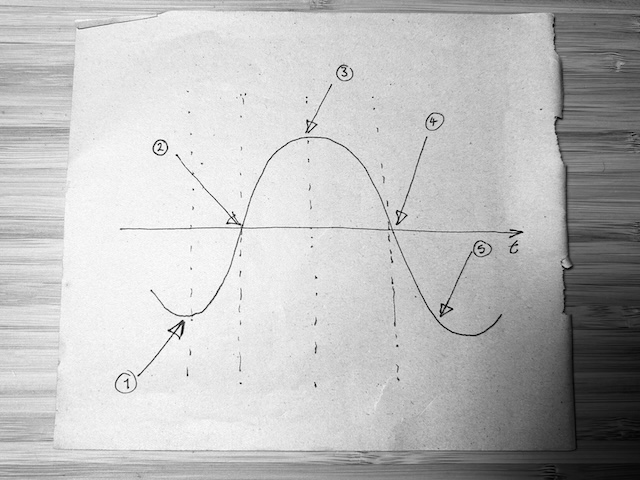(This post from the archive originally appeared in September 2024, and became a motif in the Pattern Book for Regenerative Design)
Today’s post picks up on yesterday’s theme of riding the waves of human energy in our work. The idea is to create a cycle of working that tunes in to our own and others’ level of available energy to create better thriving for all involved.
For the regenerative designer, the living world often gives us a good template for how to create thriving systems. And so, whether the wavelength we are designing for is a day, a month, a year or even a lifetime, here are some modes of working inspired by the changes that living systems cycle through. I have organised these into five touch points.
1 – Start of a new cycle
- Associated with potential and possibilities.
- Might be a dream-like state.
- Might be quite slow or dormant – possibly no activity visible on the surface.
- Gradually shifting into planning.
- Darkness, low levels of light or energy.
2 – Ascent
- Gathering momentum.
- Plans transition into action.
- Gaining confidence.
- Work becomes visible.
3 – Peak
- Maximum output or yield. Possibly a launch phase.
- Everything is visible, a point of recognition.
- The brightest part of the cycle, associated with clarity.
- Celebration of achievement and milestones.
4 – Descent
- Harvest, where outputs are gathered, enjoyed and shared.
- Reflection on work done, evaluation.
- Taking apart or shedding in readiness for the next cycle.
- Gather resources for dormant phase.
5 – Rest and renewal
- Recovery and restoring.
- Lower visibility.
- Less action, slower movement.
Of course, how we spend our time is a negotiation with others. The invitation here is to look for opportunities to acknowledge the cyclical ways in which we work. And to acknowledge more widely the cyclical pattern to the living systems that enable us to thrive.

